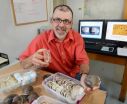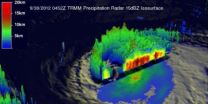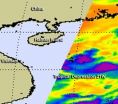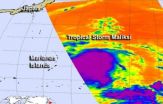(Press-News.org) EAST LANSING, Mich. — Increasingly, U.S. firms are moving or considering moving their manufacturing operations back to domestic soil from overseas, finds a new study co-authored by a Michigan State University supply chain expert.
Fueling the trend are rising labor costs in emerging countries, high oil prices and increasing transportation costs, global risks such as political instability and other factors, said Tobias Schoenherr.
"Going overseas is not the panacea that it was thought of just a decade or so ago," said Schoenherr, assistant professor in MSU's top-ranked Department of Supply Chain Management. "Companies have realized the challenges and thus are moving back to the United States."
The study found that 40 percent of manufacturing firms believe there is an increased movement of "reshoring" – or moving manufacturing plants back to the United States from countries such as China and India. The results differed by industry, but were led by aerospace and defense; industrial parts and equipment; electronics; and medical and surgical supplies.
"We were surprised by the large percentage of firms indicating that they are considering reshoring," Schoenherr said.
In addition, nearly 38 percent of companies indicated that their direct competitors have reshored.
In addition to rising costs and global risks, Schoenherr said companies are concerned with the erosion of intellectual property overseas and product quality problems, which can be difficult to fix when dealing with multiple time zones and language and cultural barriers.
"From my communication with some firms, I also sense a genuine desire to help the U.S. economy and to bring back jobs," Schoenherr said.
The study, sponsored by the Council of Supply Chain Management Professionals, is based on a survey of 319 firms.
Schoenherr's co-authors were Wendy Tate and Kenneth Petersen of the University of Tennessee and Lisa Ellram of Miami University (Ohio).
INFORMATION:
US firms bringing work home from overseas
2012-10-02
ELSE PRESS RELEASES FROM THIS DATE:
Iowa State researchers study clam shells for clues to the Atlantic's climate history
2012-10-02
AMES, Iowa – Two Iowa State University graduate students are just back from the Gulf of Maine with another big catch of clam shells.
Shelly Griffin and Madelyn Mette recently boarded a lobster boat, dropped a scallop dredge into 30 meters of ocean water and pulled up load after load of Arctica islandica.
"These are the clams that end up in clam chowder," said Alan Wanamaker, an assistant professor of geological and atmospheric sciences in the College of Liberal Arts and Sciences. Wanamaker studies paleoclimatology, the variations and trends of past climates and environments, ...
Researchers harness the immune system to improve stem cell transplant outcomes
2012-10-02
VIDEO:
Dr. Amir Toor from Virginia Commonwealth University Massey Cancer Center's Bone Marrow Transplant program explains a recent clinical trial evaluating a new therapy for multiple myeloma that harnesses the power...
Click here for more information.
Richmond, Va. – (October 1, 2012) – A novel therapy in the early stages of development at Virginia Commonwealth University Massey Cancer Center shows promise in providing lasting protection against the progression of multiple ...
GI societies issue new colonoscopy surveillance guidelines
2012-10-02
Bethesda, MD (Oct. 1, 2012) — Patients at average risk of colorectal cancer who have a clean colonoscopy do not need to repeat the test for 10 years. This and many other practical recommendations for cancer prevention were issued in "Guidelines for Colonoscopy Surveillance After Screening and Polypectomy,"1 a consensus update issued by the U.S. Multisociety Task Force on Colorectal Cancer.
Colorectal cancer is preventable when precancerous polyps (growths) are found and removed before they turn into cancer. Screening for average risk patients is recommended to begin ...
New technologies advance livestock genomics for agricultural and biomedical uses
2012-10-02
MINNEAPOLIS / ST. PAUL (10/01/2012) —New genome editing technologies developed at the University of Minnesota for use on livestock will allow scientists to learn more about human diseases.
The genomic technique, known as TALENS, is described in a report published today in the scientific journal Proceedings of the National Academy of Sciences. The technique is cheaper and faster than previous technologies that allow scientists to genetically modify livestock animals; the animals are used to learn more about human diseases, which in turn can help researchers develop cures. ...
The obese brain may thwart weight loss
2012-10-02
"Betcha can't eat just one!" For obese people trying to lose weight, the Lays potato chip advertising slogan hits a bit too close to home as it describes the daily battle to resist high calorie foods.
But new research by Terry Davidson, director of American University's Center for Behavioral Neuroscience, indicates that diets that lead to obesity—diets high in saturated fat and refined sugar—may cause changes to the brains of obese people that in turn may fuel overconsumption of those same foods and make weight loss more challenging.
"It is a vicious cycle that may ...
NASA sees Nadine weaken to a tropical storm again
2012-10-02
NASA satellites continue to watch the long-lived Nadine in the eastern Atlantic. Today, Oct. 1, NASA satellite data revealed that Nadine has weakened from a hurricane and is now a tropical storm.
Over the weekend of Sept. 29 and 30, Hurricane Nadine dramatically rebounded. On September 19, 2012 Nadine appeared to be dissipating quickly and was expected to become post-tropical but after over a week of meandering near the Azores, Nadine sprang to life again as a hurricane on Friday September 28, 2012.
NASA's Tropical Rainfall Measuring Mission (TRMM) satellite's path ...
NASA observes another tropical depression birth in northwestern Pacific
2012-10-02
The twenty-first tropical depression of the northwestern Pacific Ocean was born as a NASA satellite flew overhead on Oct. 1, capturing its "baby picture" in infrared light.
On Monday, Oct. 1 at 1500 UTC (11 a.m. EDT), Tropical Depression 21W (TD21W) had maximum sustained winds near 25 knots. It was centered about300 nautical miles south of Hong Kong, near 17.4 North latitude and 114.8 East longitude. TD21W has tracked northward at 5 knots and is expected to curve to the northwest and west.
On Oct. 1, 2012, infrared imagery from the Atmospheric Infrared Sounder (AIRS) ...
Tropical Storm Maliksi forms, Iwo To on guard
2012-10-02
The western North Pacific is in full swing, tropically speaking and NASA observed the birth of Tropical Storm Maliksi on Sept. 30. NASA's Aqua satellite captured an infrared image of the storm when it was a depression and revealed a large area of powerful thunderstorms around its center that hinted at its strengthening.
Tropical Storm Maliksi formed from the twentieth tropical depression of the western North Pacific typhoon season. Tropical Depression 20W formed on Sept. 20 about 305 nautical miles from Guam near 16.3 North and 149.0 East. It is moving to the north-northwest ...
Digital mammography improves population-based breast cancer screening
2012-10-02
OAK BROOK, Ill. – New research from the Netherlands shows that the switch from screen film mammography (SFM) to digital mammography (DM) in large, population-based breast cancer screening programs improves the detection of life-threatening cancer without significantly increasing detection of clinically insignificant disease. Results of the study are published online in the journal Radiology.
DM's higher sensitivity at detecting breast cancer raised concerns that its introduction into screening programs would increase the diagnosis of clinically unimportant cancers—cancers ...
Novel MRI technique could reduce breast biopsies
2012-10-02
OAK BROOK, Ill. – Water diffusion measurements with MRI could decrease false-positive breast cancer results and reduce preventable biopsies, according to a new study published online in the journal Radiology. Researchers said the technique also could improve patient management by differentiating high-risk lesions requiring additional workup from other non-malignant subtypes.
Dynamic contrast-enhanced MRI (DCE-MRI) has emerged in recent years as a useful tool in breast cancer detection and staging. One of its primary limitations is a substantial number of false-positive ...




